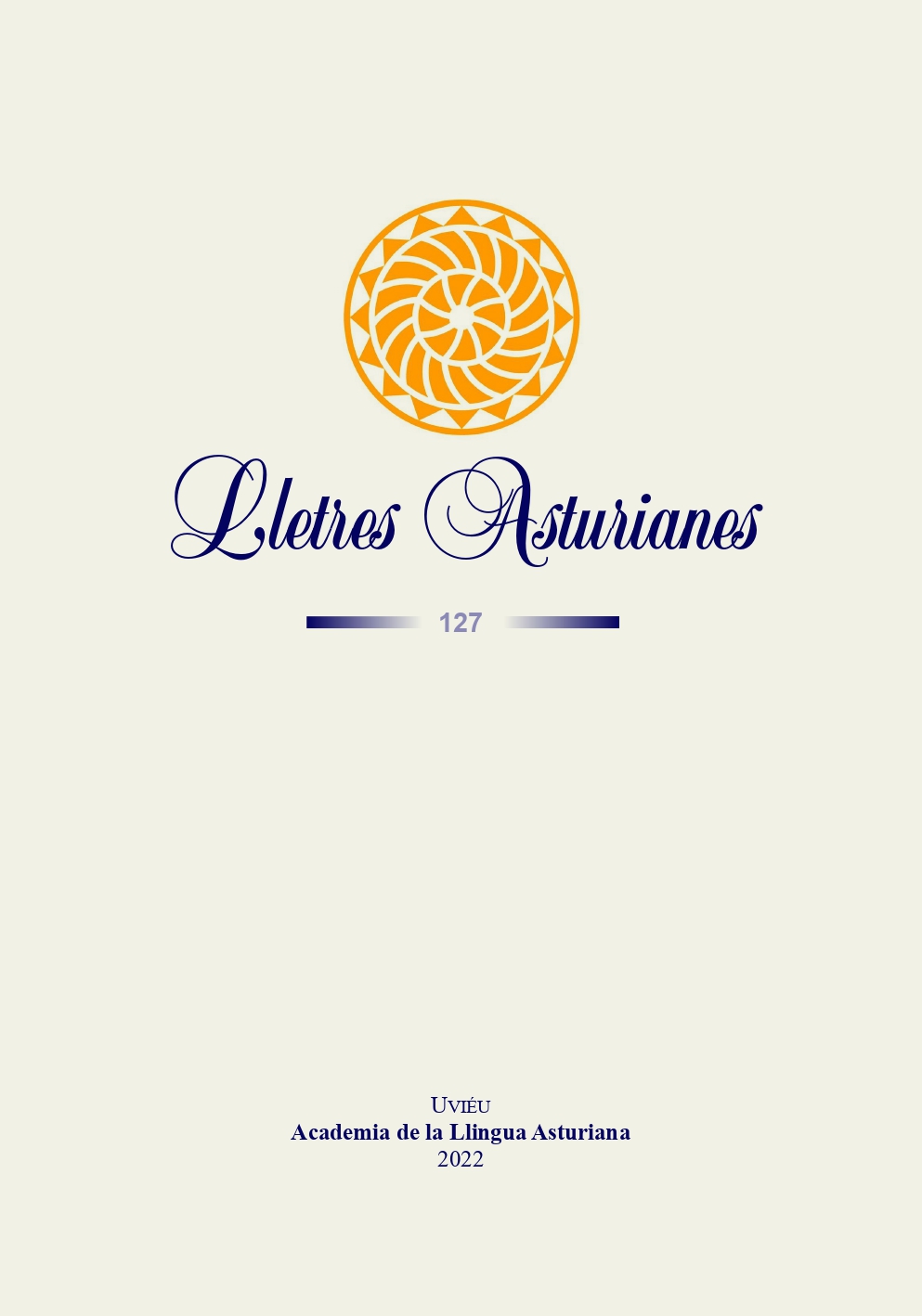Resumen
A análise do português falado na aldeia raiana de Avelanoso, concelho de Vimioso, revela similaridades entre as peculiaridades do falar das gentes desta localidade e o mirandês. Com base em estudos sobre a língua mirandesa, sobretudo no de Barros Ferreira (2001) acerca da situação e delimitação linguística do mirandês, e numa abordagem metodológica qualitativa fundada em entrevistas recolhidas na referida aldeia, o objetivo deste trabalho é compreender de que modo os traços característicos e distintivos do mirandês se podem também encontrar no falar das gentes de Avelanoso. No seio das variedades regionais da língua portuguesa, considera-se falar como um registo que convive apenas com as manifestações orais, composto por traços pouco diferenciados, mas com cambiantes próprios dentro da estrutura regional em que está inserido, sendo de uso circunscrito a pequenas delimitações geográficas (Cunha & Cintra, 2002). Esta pesquisa analisa as particularidades do falar desta comunidade do Nordeste Trasmontano através da preservação, reflexão e reconstrução da memória no contexto da história oral (Bosi, 2003). As conclusões indicam que as particularidades linguísticas do português desta aldeia coincidem em grande número com os traços distintivos da língua mirandesa. De acordo com os resultados, as afinidades e os vestígios descortinados, este estudo defende que efetivamente se falou mirandês em Avelanoso e que o português falado nesta aldeia continua a expressar essa contiguidade sociolinguística que ainda se pode verificar na atualidade, apesar das profundas mudanças sociais, económicas e linguísticas.
Citas
Alves, A., & Barros, A. (2015). Mirandês, leonês, português e castelhano: glotocídio e conciliação. Conflito e Trauma, (pp.413-434).
Bosi, E. (2003). O tempo vivo da memória: ensaios de psicologia social. São Paulo: Ateliê Editorial.
Calvet, J. L. (2005). Lingüística y colonialismo. Breve tratado de glotofagia. San Diego: Fondo de Cultura Económica.
Ceolín, R. (2002). Um enclave leonês na paisagem unitária da língua portuguesa. Ianua, 3, 62-83.
Cunha, C., & Cintra, L. (2002) [1985]. Nova Gramática do Português Contemporâneo. Lisboa: Edições João Sá da Costa.
Ferreira, A. (2004). La Cidade de Miranda de l Douro i la lhéngua mirandesa. El filandar/O Fiadeiro, XV, 1924.
Ferreira, A. (2010). O mínimo sobre a língua mirandesa. [Estudo publicado na Revista do Festival Intercéltico, Sendim, 2010]. Disponível em: https://studosmirandeses.blogs.sapo.pt/1294.html. Acesso em: 1 dez. 2019
Ferreira, C. (2021, Setembro 26). Planalto Mirandês versus Terras de Miranda [Vídeo]. YouTube. https://www.youtube.com/watch?v=8TrQBunF3ow.
Ferreira, M. B. (1995). O mirandês e as línguas do Noroeste peninsular. Lletres Asturianes, 57, 7-22.
Ferreira, M. B. (2001). A situação actual da língua mirandesa e o problema da delimitação histórica dos dialectos asturo-leoneses em Portugal. Revista de Filologia Românica, 18, 117-136.
Ferreira, S., & Martins, C. (2016). Capital tradutológico e defesa da língua mirandesa. Em Bautista, A., Moutinho, L., & Lídia, R. (coords.), Ecolinguismo e línguas minoritárias: colóquio internacional sobre ecolinguismo e línguas minoritárias: uma homenagem a Amadeu Ferreira (pp. 183-222). Aveiro: UA Editora.
Gil, A. C. (2008). Métodos e técnicas de pesquisa social. São Paulo: Atlas.
Gonçalves, V. (2000). Teatro popular mirandês. Seguido de um inventário dos Cascos representados na Tierra de Miranda. Em Meirinhos, J. F. (coord.), Estudos Mirandeses: Balanços e Orientações. Homenagem a António Maria Mourinho (pp. 151-178). Porto: Granito Editores.
Gouveia, C. (2008). As dimensões da mudança no uso das formas de tratamento em Português Europeu. Em Oliveira, F., & Duarte, I, (orgs.), O fascínio da Linguagem: Actas do Colóquio de Homenagem a Fernanda Irene Fonseca (pp. 91-100). Porto: CLUP/FLUP.
Le Goff, J. (2003). História e Memória. Campinas: Editora Unicamp.
Mateus, M. H. (2003). Gramática da Língua Portuguesa. Lisboa: Editorial Caminho.
Meihy, J. C., & Holanda, F. (2007). História oral: como fazer, como pensar. São Paulo: Editora Contexto.
Meirinhos, L. M. (2014). A evolução da Terra de Miranda: Um estudo com base nos Sistemas de Informação Geográfica [Tese de Mestrado, Universidade do Porto]. Repositório Institucional da Universidade do Porto.
Mourinho, A. M. (1987). A língua mirandesa como vector cultural do Nordeste português. Em Mourinho, A. M (org.), Actas das las Jornadas de Língua e Cultura Mirandesa (pp. 75-87). Miranda de l Douro: Sociedade Gráfica.
Mourinho, A. M. (1993). Breves notas sobre a Língua Mirandesa desde há cem anos. Em Vasconcellos, J. L. (dir.), Estudos de Philologia Mirandesa (pp. 14-21). Miranda do Douro: Câmara Municipal de Miranda de l Douro.
Merlan, A. (2009). El mirandés. Situación sociolingüística de una lengua minoritaria en la zona fronteriza portuguesa-española. Uviéu: Academia de la Llingua Asturiana.
Pires, M. J. (2021). O (o)caso do voseio português do Nordeste Trasmontano. Fórum Linguístico, 18(3), 6706-6716.
Penna, R. (2020). Percursos Historiográficos e fontes orais: elementos para uma discussão. Unimontes Científica, 7(1), 95-106.
Perazzo, P. (2015). Narrativas Orais de Histórias de Vida. Comunicação & Inovação, 16(30), 121-131.
Quarteu, R., & Conde, X. F. (2002). L Mirandés: Ũa Lhéngua Minoritaira an Pertual. Ianua, 2, 89-105.
Santana, M. O. (2007). A Língua Mirandesa. Latitudes, 29, 51-56.
Santos, M. J. (1967). Os falares transfronteiriços de Trás-os-Montes. Separata da Revista Portuguesa de Filologia, XII, XIII e XIV, Coimbra: Instituto de Estudos Românicos.
Sousa, M., & Baptista, C. (2012). Como Fazer Investigação, Dissertações, Teses e Relatórios - Segundo Bolonha. Lisboa: Edições Lidel.
Teyssier, P. (1997). A história da língua portuguesa. Tradução de Celso Cunha. São Paulo: Martins Fontes.
Vasconcellos, J. L. (1900). Estudos de Philologia Mirandesa. vol. 1. Lisboa: Imprensa Nacional.
Vasconcellos, J. L. (1901). Estudos de Philologia Mirandesa. vol. 2. Lisboa: Imprensa Nacional.
Vigón, S. (2000). El mirandés nel cuadru de les llingües peninsulares. Em Meirinhos, J. F. (coord.), Estudos Mirandeses: Balanços e Orientações. Homenagem a António Maria Mourinho (pp. 77-83). Porto: Granito Editores.


